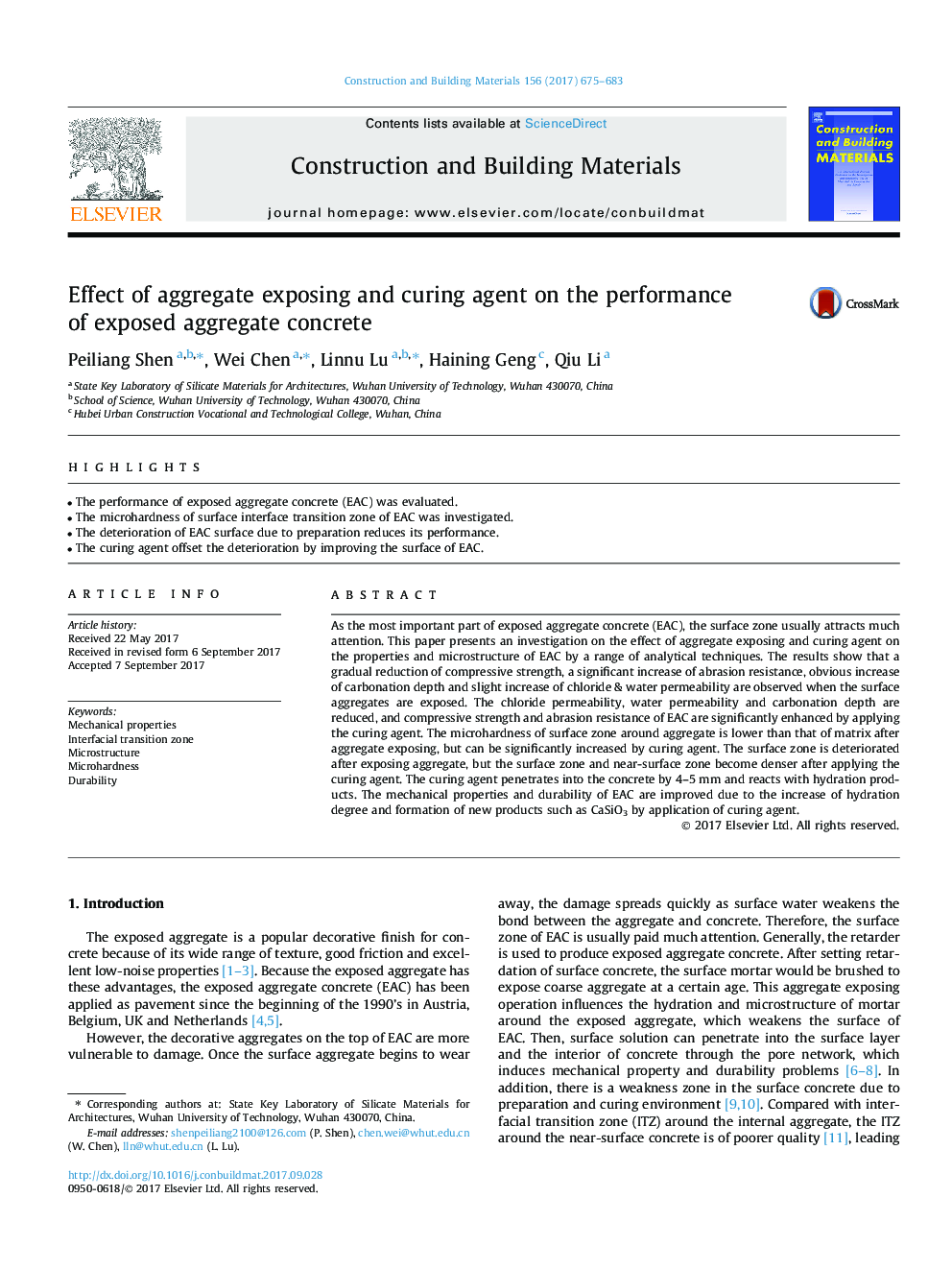| Article ID | Journal | Published Year | Pages | File Type |
|---|---|---|---|---|
| 4912698 | Construction and Building Materials | 2017 | 9 Pages |
Abstract
As the most important part of exposed aggregate concrete (EAC), the surface zone usually attracts much attention. This paper presents an investigation on the effect of aggregate exposing and curing agent on the properties and microstructure of EAC by a range of analytical techniques. The results show that a gradual reduction of compressive strength, a significant increase of abrasion resistance, obvious increase of carbonation depth and slight increase of chloride & water permeability are observed when the surface aggregates are exposed. The chloride permeability, water permeability and carbonation depth are reduced, and compressive strength and abrasion resistance of EAC are significantly enhanced by applying the curing agent. The microhardness of surface zone around aggregate is lower than that of matrix after aggregate exposing, but can be significantly increased by curing agent. The surface zone is deteriorated after exposing aggregate, but the surface zone and near-surface zone become denser after applying the curing agent. The curing agent penetrates into the concrete by 4-5Â mm and reacts with hydration products. The mechanical properties and durability of EAC are improved due to the increase of hydration degree and formation of new products such as CaSiO3 by application of curing agent.
Related Topics
Physical Sciences and Engineering
Engineering
Civil and Structural Engineering
Authors
Peiliang Shen, Wei Chen, Linnu Lu, Haining Geng, Qiu Li,
